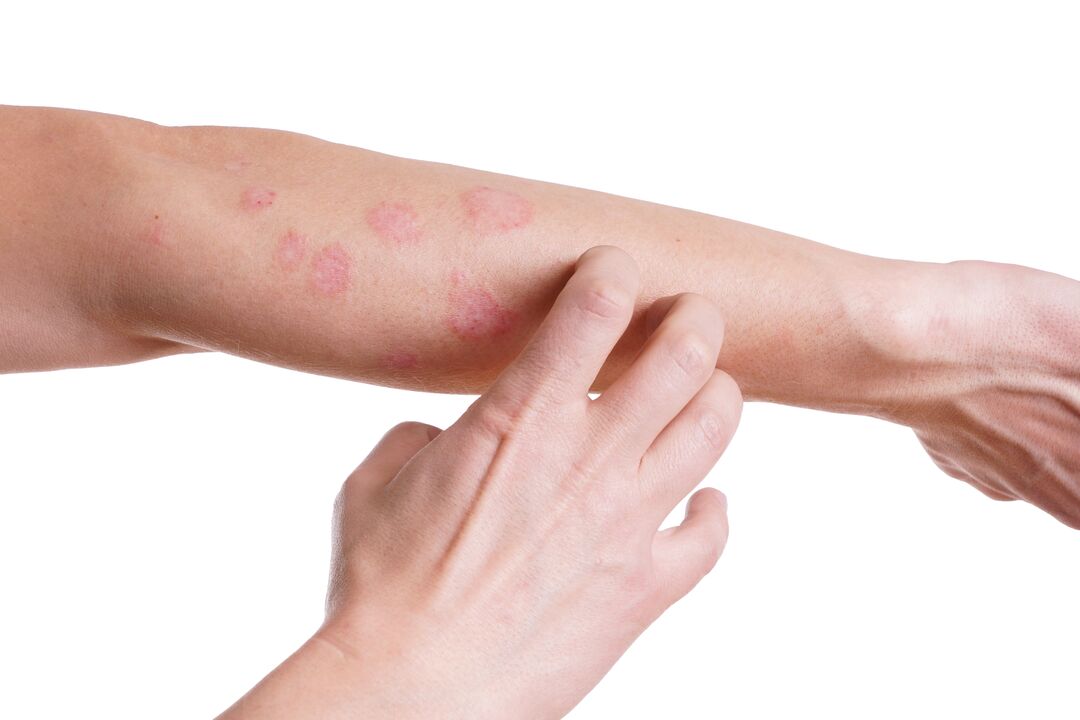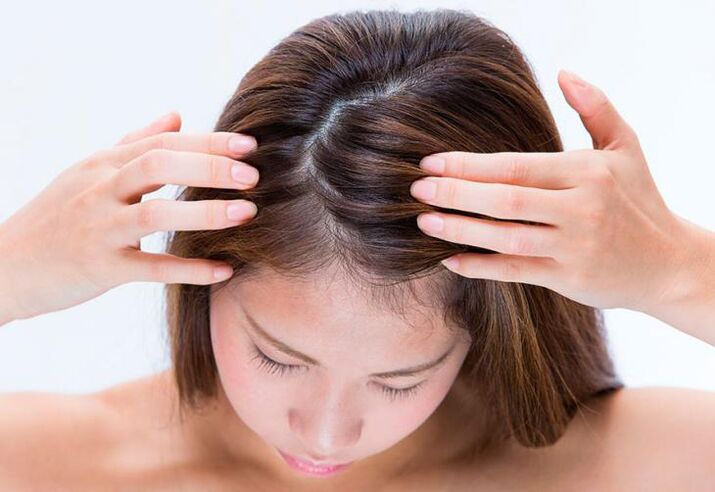Psoriasis (Greek "Psorra" - "Skin Disease, Cancer") is a chronic, non -infectious disease. The scales are lichen (also called psoriasis) primarily affects the skin and the skin of the elbows and knee joints on the head and lower part. But there are nails, joints and external genitals psoriasis, but these forms are extremely rare.
Causes of psoriasis

This disease is due to a short life cycle. The fact is that in a healthy person, the cells of the skin are updated every 30 days, ie the division and ripening cycle within about 4 weeks. Psoriasis, we could say, an abnormal reaction of the body to the various external stimuli, which results in the upper layer of the skin in just 4-5 days and leaving the keratinized areas behind.
Psoriasis is so far considered a diverse disease, ie it is based on the whole causes of the disease: immunological shifts, metabolic disorders, various concomitant neurological and endocrine disorders.
The exact causes of psoriasis are not determined. There are many theories in this regard. According to one of them two types of psoriasis are distinguished:
- The cause of Type I is inherited by the demolition of the immune system. Such a form of skin disease is about people. 65% are ill and most often 18-25 years old;
- II. The type of psoriasis appears in people over 40 years of age, is not inherited and is not related to violation of the immune cells. Unlike the first type, the second includes psoriasis of the nails and joints.
Another theory is that psoriasis is only due to impaired immunity, which can be caused by infectious diseases, stress, alcoholic beverages, malnutrition, cold climate. Foods containing clamps, pepper and vinegar can cause aggravation and exacerbate psoriasis. Psoriasis is a systemic disease according to this theory. This means that in the case of a severe impaired immune system, the process can spread from the skin to other tissues and organs, such as joints, which results in psoriatic arthritis.
Symptoms of psoriasis
The symptoms of the scalp, knees, elbows and lower back are inflamed with red or pink papules. They are covered with silver scales (therefore the name "Scaly Lichen"), which easily disappears. Over time, the size of the spots increases, combines large formations (plaques) and affects several and large areas, as well as cracks and bleeding of the injured skin.
The nail psoriasis manifests itself slightly differently. First of all, the nail plates darken, spots and point recesses. Very often, in psoriasis, the nails thicken and crumble.
The symptoms of psoriasis in the form of rash are accompanied by severe itching, especially in the papules, but this applies to nearby areas.
Depending on the seasonality of aggravation, three types of psoriasis can be distinguished: summer, winter and uncertain. Most often they find a winter type - the sunlight weaken and sometimes disappear completely. On the contrary, in patients with summer form, the course of the disease deteriorates under the influence of the sun.
Treatment of psoriasis
Treatment of psoriasis is performed with various drugs and methods, depending on the type. In any case, therapy must be complex.
Medication for psoriasis in the progressive phase generally includes the following:
- Antihistamines;
- Hypensesbibing drugs;
- Vitamin A, C, B6, B12;
- Sedatives;
- External funds.
In the locally bound stage of psoriasis, autohemotherapy (method of treatment with its own blood), antiphagine or anatoxin injections (in the presence of chronic infection) and ultraviolet irradiation are presented. For external use, with the addition of ichthyol, brimmed ointment, and nafalanan corticosteroids.
Often the scalp psoriasis and the skin of other parts of the body are treated with laser. Lazer rays activate live tissue molecules, providing photos-mechanical, photochemical and other positive effects.

To treat severe forms of psoriasis, photo chemotherapy is used, which includes the effect of long-wave UV rays and the use of special drugs. Thanks to photochemotherapy, plaques can get rid of approx. 80% and with regular use - about 95%. During the severe course, corticosteroid hormones and cytotoxic immunosuppressants are warranted.
Psoriasis, radiation therapy, ultrasound, ultrafonophoresis, electrotherapy, cryotherapy, magnetic waves, thalassotherapy, plasososository and hemorusation are also used.
Each patient shows a diet by limiting carbohydrates and animal fats, except for acute foods and alcohol. In addition, patients with psoriasis are recommended by resort -sea bathing, sunbathing, radon and hydrogen sulfide springs.
Treatment of psoriasis with folk medicine
Folk recipes also help to get rid of the symptoms of psoriasis. It is worth reminding, however, that this disease may be caused by demolition of the immune system and impaired immunity due to chronic diseases. Therefore, the treatment of psoriasis with folk drugs should be agreed with the attending physician, and for the second time, only basic therapy can be complemented. Ignoring or inadequate treatment of such a serious illness is full of transition to a severe shape characterized by damage to the joints. They start to swell, lose mobility and get sick. In addition, psoriasis reduces the instability of the emotional and psychological condition.
So, popular recipes:
- Infusion of flowers and leaves is black boda: 2 teaspoons. The raw materials pour 0, 5 liters of boiling water and stick for one hour. Filter the brew, take 1/3 cup three times a day;
- Sea Buckthorn Oil: Take the inside of 1 teaspoon. once a day;
- Mustard Ointment: Mix 1/2 teaspoon. Dry mustard, 5 tablespoons. Warm broth from St. John's beer, 1 teaspoon melted butter. Place the mixture in the affected areas, after a few minutes wash with cool water, give up moisturizer. Perform procedures once a week.
Very useful for the bath psoriasis, with the addition of a series, Celandine, St. John's Wort, FIR extract and sage.
Unfortunately, it is currently impossible to cure psoriasis, relapse can occur at any time, so people with such a diagnosis need to be constantly monitored by a dermatologist.























